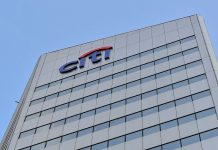In a historic turn of events, a $61 million settlement was submitted to the court in a six-year-long legal battle against General Electric (GE). The case centered around allegations of fiduciary misconduct, as GE was accused of incorporating its own investment options into a $30.3 billion retirement plan, a move plaintiffs argued violated its fiduciary responsibilities. The class-action lawsuit covers plan members as of September 26, 2011.
Court records reveal that the settlement, if accepted, will mark the largest financial award in an ERISA (Employee Retirement Income Security Act) case involving proprietary funds. Notably, an estimated $20.3 million of the settlement will be allocated to attorneys.
The heart of the dispute lay in GE's inclusion of its five mutual funds alongside low-cost index funds in its investment strategy. Plaintiffs asserted that plan participants owned the majority of the fund's assets, implying that the company had a financial incentive to keep these investments.
Furthermore, the funds, managed by GE Asset Management, were the only actively managed options available to participants, and according to the plaintiffs, they consistently underperformed compared to third-party alternatives. This raised suspicions that GE deliberately kept them on the table during its $110 billion asset management business sale to State Street in 2016 to inflate their value.
Bonnie Treichel, Chief Solutions Officer at Endeavor Retirement, highlighted the significant trend in 401(k) litigation settlements, which have seen a dramatic increase from $200,000 to $40 million over the past few years. Between 2020 and 2022, there were 75 cases reported.
Treichel emphasized the magnitude of this settlement, underscoring that it still awaits court approval. She pointed out that although this case involves a colossal sum, its repercussions will reverberate through best practices across all plan sizes.
As of 2021, the GE 401(k) plan boasts over $30 billion in assets, firmly positioning it as one of the largest in the United States. Remarkably, when the lawsuit first emerged in 2017, plaintiffs initially projected losses of $700 million. Therefore, the $61 million settlement represents a significantly reduced figure.
This groundbreaking settlement serves as a watershed moment in ERISA litigation, setting a remarkable precedent for the handling of retirement plan disputes. Its implications are anticipated to permeate the landscape of retirement planning and best practices for years to come.






















